Frequent flyer credit cards reward you with free flights, upgrades and other travel perks just for doing your everyday spending. There’s a card for everything: you can choose from basic, no-frills options to cards that dish out big points and big features.
Plenty of frequent flyer credit cards come with epic sign-up bonus points to kickstart your rewards stash, and some have balance transfer features if you want to shift your debt to a new card for 0% interest and to pay it off faster.
Or, if you’re just saying “show me the points!“, look for credit cards that pay out the highest number of frequent flyer points for every dollar you spend.
We’ve made it easy by summarising the features of each card right here. You can click the card to see the card’s full details on the bank’s website, and apply from there too.
Here’s the top frequent flyer credit cards for August 2024
Check out our top frequent flyer deals for this month. Click ‘go to offer’ for a full rundown of the card’s features, and to apply.
Qantas Premier Platinum Credit Card – up to 100,000 bonus Qantas Points
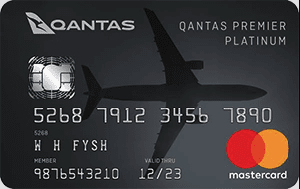 With the Qantas Premier Platinum Credit Card, you’ll get up to 100,000 bonus Qantas Points – 70,000 when you apply and spend $3,000 or more on eligible purchases within 3 months from card approval, plus an additional 30,000 if you haven’t earned Qantas Points with a credit card in the last 12 months. Their rewards program is solid too, giving you 1.5 points per $1 spent on international purchases, 1 point for domestic spending (up to $10,000 per statement period, then reverts to 0.5 points) and a bonus point when you buy selected Qantas products and services. This card has some other good perks, like a concierge service, discounted flights for up to 8 companions, lounge access and a reduced annual fee for the first year, plus 0% p.a. on balance transfers for 12 months with a 2% balance transfer fee.
With the Qantas Premier Platinum Credit Card, you’ll get up to 100,000 bonus Qantas Points – 70,000 when you apply and spend $3,000 or more on eligible purchases within 3 months from card approval, plus an additional 30,000 if you haven’t earned Qantas Points with a credit card in the last 12 months. Their rewards program is solid too, giving you 1.5 points per $1 spent on international purchases, 1 point for domestic spending (up to $10,000 per statement period, then reverts to 0.5 points) and a bonus point when you buy selected Qantas products and services. This card has some other good perks, like a concierge service, discounted flights for up to 8 companions, lounge access and a reduced annual fee for the first year, plus 0% p.a. on balance transfers for 12 months with a 2% balance transfer fee.
Go to offer
Qantas American Express Ultimate – 50,000 bonus Qantas Points plus $450 Qantas Travel Credit
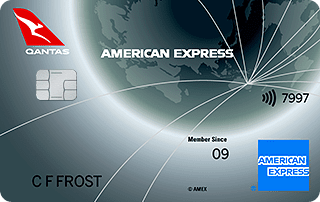 The Qantas American Express Ultimate Credit Card is a premium card that offers loads of travel benefits and points. New cardholders could receive 50,000 bonus Qantas Points when you apply online by 14 January 2025, are approved, and spend $3,000 on eligible purchases on your new Card within the first 3 months. Earn up to 1.25 Qantas Points on everyday purchases, 0.5 Qantas Points on government spend, and an additional 1 point per $1 on eligible Qantas products and services with no points capping. Each year you’ll receive a $450 Qantas Travel Credit for eligible domestic or international Qantas flights when booked through American Express Travel, which compensates for the $450 annual fee.
The Qantas American Express Ultimate Credit Card is a premium card that offers loads of travel benefits and points. New cardholders could receive 50,000 bonus Qantas Points when you apply online by 14 January 2025, are approved, and spend $3,000 on eligible purchases on your new Card within the first 3 months. Earn up to 1.25 Qantas Points on everyday purchases, 0.5 Qantas Points on government spend, and an additional 1 point per $1 on eligible Qantas products and services with no points capping. Each year you’ll receive a $450 Qantas Travel Credit for eligible domestic or international Qantas flights when booked through American Express Travel, which compensates for the $450 annual fee.
Go to offer
Qantas Premier Everyday Credit Card – up to 8,000 bonus Qantas Points
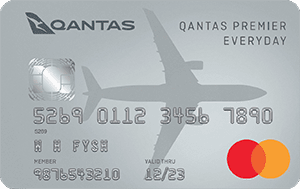 The Qantas Premier Everyday Credit Card offers a range of benefits. For the first 4 months from card approval, cardholders can earn 2 bonus Qantas Points per $1 spent on eligible purchases, on top of the standard earn rates. This allows for a maximum of 8,000 bonus Qantas Points when you apply today and get approved. The card features a low annual fee, complimentary international travel insurance, and a 0% p.a. interest rate on balance transfers for 12 months with 2% balance transfer fee.
The Qantas Premier Everyday Credit Card offers a range of benefits. For the first 4 months from card approval, cardholders can earn 2 bonus Qantas Points per $1 spent on eligible purchases, on top of the standard earn rates. This allows for a maximum of 8,000 bonus Qantas Points when you apply today and get approved. The card features a low annual fee, complimentary international travel insurance, and a 0% p.a. interest rate on balance transfers for 12 months with 2% balance transfer fee.
Go to offer
ANZ Frequent Flyer Platinum Credit Card – 75,000 bonus Qantas Points and $100 back
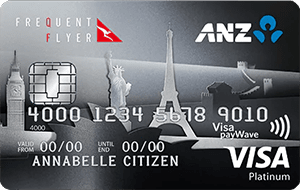 ANZ Frequent Flyer Platinum Credit Card provides plenty of platinum perks plus, a very appealing introductory offer of 75,000 bonus Qantas Points and $100 back to your card when you spend $2,500 on eligible purchases in the first 3 months from approval. This card lets you earn Qantas Points as you shop – 0.75 Qantas Points per $1 spent on eligible purchases up to $3,000 per statement period, then 0.5 Qantas Points per $1 spent on eligible purchases above $3,000 per statement period. On top of that, enjoy platinum benefits including complimentary International and Domestic Travel Insurance, Purchase Protection Insurance, Extended Warranty Insurance, and eligibility for Visa Offers + Perks.
ANZ Frequent Flyer Platinum Credit Card provides plenty of platinum perks plus, a very appealing introductory offer of 75,000 bonus Qantas Points and $100 back to your card when you spend $2,500 on eligible purchases in the first 3 months from approval. This card lets you earn Qantas Points as you shop – 0.75 Qantas Points per $1 spent on eligible purchases up to $3,000 per statement period, then 0.5 Qantas Points per $1 spent on eligible purchases above $3,000 per statement period. On top of that, enjoy platinum benefits including complimentary International and Domestic Travel Insurance, Purchase Protection Insurance, Extended Warranty Insurance, and eligibility for Visa Offers + Perks.
American Express Qantas Business Rewards Card – 150,000 bonus Qantas Points
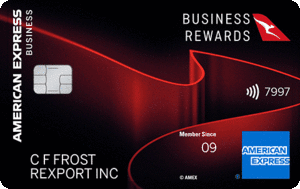 If you’ve got a business and you’re looking for opportunities to earn the most of your transactions, you should take advantage of this massive welcome offer of 150,000 bonus Qantas Points from the American Express Qantas Business Rewards Card. Receive 150,000 bonus Qantas Points when you apply by 1 October 2024, are approved, and spend $6,000 on eligible purchases on your Card in the first 3 months from approval. Enjoy TRIPLE Qantas Points for your business on eligible Qantas flights and 2 Qantas Points on Qantas products and services. This is a charge card with no pre-set spending limit which ensures greater payment flexibility. Offers two new exciting benefits – up to $200 back with Dell Technologies.
If you’ve got a business and you’re looking for opportunities to earn the most of your transactions, you should take advantage of this massive welcome offer of 150,000 bonus Qantas Points from the American Express Qantas Business Rewards Card. Receive 150,000 bonus Qantas Points when you apply by 1 October 2024, are approved, and spend $6,000 on eligible purchases on your Card in the first 3 months from approval. Enjoy TRIPLE Qantas Points for your business on eligible Qantas flights and 2 Qantas Points on Qantas products and services. This is a charge card with no pre-set spending limit which ensures greater payment flexibility. Offers two new exciting benefits – up to $200 back with Dell Technologies.
Go to offer
ANZ Frequent Flyer Black Credit Card – Up to 130,000 bonus Qantas Points and $250 back
 A high-earning rewards card – ANZ Frequent Flyer Black Credit Card offers up to 130,000 bonus Qantas Points – 100,000 bonus Qantas Points and $250 back to your new card when you spend $5,000 on eligible purchases in the first 3 months from approval plus 30,000 bonus Qantas Points when you keep your card for a year. Earn 1 Qantas Point per $1 spent up to $7,500 per statement period, then 0.5 Qantas Points per $1 spent above $7,500 per statement period, uncapped. Enjoy its excellent selection of features including, complimentary Qantas Frequent Flyer membership, yearly Qantas Club lounge invitations, and travel insurance covers.
A high-earning rewards card – ANZ Frequent Flyer Black Credit Card offers up to 130,000 bonus Qantas Points – 100,000 bonus Qantas Points and $250 back to your new card when you spend $5,000 on eligible purchases in the first 3 months from approval plus 30,000 bonus Qantas Points when you keep your card for a year. Earn 1 Qantas Point per $1 spent up to $7,500 per statement period, then 0.5 Qantas Points per $1 spent above $7,500 per statement period, uncapped. Enjoy its excellent selection of features including, complimentary Qantas Frequent Flyer membership, yearly Qantas Club lounge invitations, and travel insurance covers.
Finding the Best Credit Card Offers on Frequent Flyer Cards
Frequent flyer points (and the redemption programs they’re attached to) can be a confusing world to dive into, but they’re also some of the best perks a credit card can offer.
You’ll earn rewards points just for doing your day-to-day spending, and convert those points into travel freebies and privileges, or even retail products.
Now sure how to find your best card? We’ve got you covered. Below is an easy guide on frequent flyer points, how they work, and how to find the credit card that’ll give you the most bang for your buck.
Step 1: Things to look out for when comparing frequent flyer credit cards:
- The frequent flyer program it’s attached to
- Whether the points can be transferred to other frequent flyer programs
- Introductory bonus points you get for signing up
- Any expiration dates on your points
- The earn rate (points you earn per dollar spent)
- Caps on the points you can earn
- Annual fees
- Other bonus features of the card
Introductory Bonus Points
Some frequent flyer cards give you bonus rewards points on sign-up, up to the tune of 120,000 points (or even more).
But there’s a small catch – you’ll need to meet the eligibility criteria to get your points, which usually means spending a minimum amount on your card within a certain timeframe.
Check the amount required and make sure you can meet it – it’s often in the vicinity of $3,000 spent within 90 days of approval, but can be more or less.

How many points you could earn
Rewards points are handed out for the dollars you spend on eligible purchases. Some things won’t earn rewards points, like Bpay transactions, cash advances (where you withdraw money from your credit card) and some government payments.
Most times, rewards also won’t apply on balance transfers, where you move your balance remaining from one credit card to a new one that has 0% or low interest applied to the transferred amount. Check the card’s PDS and the TMD to make sure.
The amount of points you can earn depends on a few things:
- The earn rate. That’s how many points per $1 you spend. 1 frequent flyer point per dollar is fairly standard, although some cards offer 0.5 or 0.75 points per $1.
- Tiered points. Sometimes the earn rate changes depending on what you buy and where. For instance, a card might pay 1 point per $1 for eligible purchases up to a certain amount per month, and then it drops to 0.5 points per $1 after that. You might earn more points for international purchases, or for buying products through an affiliate business or airline.
- Points caps. Some cards put a limit on the amount of frequent flyer points you can earn in a year (for instance, 100,000 points annually). However, in some cases, points that are earned for purchases made with particular businesses are uncapped points and don’t count towards your total points count. So you could earn, for example, 125,000 points in a year even if the cap is 100,000, because 25,000 were earned from uncapped purchases at certain stores.
- Membership status. Depending on the card, you may earn status points with your spending that move you up into more prestigious tiers, potentially offering more points per $1, and unlocking more travel features like extra checked baggage, flight upgrades and lounge access.
To make the most points from your spending, you can think about how much you spend on your card each month, and choose an offer with uncapped points or a higher spending tier so you don’t lose out on valuable rewards by hitting the points earning limit.
Also, consider the things you buy often. 🛒 If you use your card for supermarket spending, look for a card with the best earn rate on those purchases. ✈️ Or, if you use your card for travel, find a card that rewards spending on flights, accommodation and car rentals.
Annual fees and ongoing costs (and the trifecta sweet spot)
The balancing act of finding a great frequent flyer card for you is weighing up the annual fee, the earn rate and the introductory offer.
Super handy tips on annual fees:
- A card with a big introductory offer is likely to have a higher earn rate, but also a higher annual fee.
- A card with a moderate introductory offer will usually have a lower earn rate, and a lower annual fee to suit.
Finding a card that hits your trifecta sweet spot means looking at the value you’ll get from the frequent flyer rewards, and deciding if it outweighs the annual fee.
For example, if you earned 45,000 points per year on a Qantas frequent flyer credit card that offered 1 point per $1 spent, and had an annual fee of $350, you would have to weigh up if your points earn was worth the slightly higher yearly fee.
Considering 36,000 points can get you to Christchurch and back from Sydney using Qantas points (plus any normal taxes and airline fees), and adding in any other perks the card offers like free travel insurance, the card may work out well in your favour even with a higher annual fee.
And of course, that example doesn’t include any bonus offer points when you sign up.
On that point, some cards offer reduced annual fees for the first year, or lower ongoing annual fees if you spend a minimum amount per year. Check for the latest frequent flyer credit card annual fee deals using the ‘annual fee’ toggle on our one-click comparison tool.
The interest you’ll be charged
When you use your credit card and don’t pay off the balance (the amount you owe) before the due date or within any interest-free periods the card offers, you’ll have to pay interest on the balance.
It’s also called the purchase rate, and frequent flyer credit cards tend to have higher purchase rates because they’re a high-value card.
Check the purchase rate and make sure you’re confident you can keep on top of your repayments so you’re not slugged with high interest charges, because that will reduce the value of your travel rewards.
Expiration dates on frequent flyer points
Some frequent flyer points never expire, but some expire within a certain timeframe, or if you don’t use your card for a specified amount of time. It’s generally easy to keep your account active because you’ll be earning points every time you spend on your card.
| Frequent Flyer program | Points expiry policy | How to keep points active |
|---|---|---|
| Velocity Points | Yes, after 24 months of inactivity |
|
| Qantas Points | Yes, after 18 months of inactivity on your account |
|
| American Express Travel Points | No expiry, but points will be lost if all cards connected to the program are cancelled |
|
Always check the fine print of the frequent flyer program for expiration policies, and any situations where they may cancel the rewards program.
Step 2: Unpacking the best frequent flyer program for you
Each frequent flyer credit card is linked to a specific frequent flyer program that you can redeem the points through.
Here’s a snapshot of the frequent flyer programs available that cover Australian and international airlines:
- Qantas – Qantas Frequent Flyer
- Virgin – Virgin Australia Velocity Frequent Flyer
- Singapore – Airlines Singapore Airlines KrisFlyer
- Cathay Pacific – Marco Polo Club
- Etihad – Etihad Guest
- Emirates – Skywards
- Malaysia Airlines – Enrich
- British Airways – British Airways Executive Club
- American Airways – AAdvantage Frequent Flyer
- United – Mileage Plus
As you’re comparing cards, you’ll notice most link up with Qantas Frequent Flyer, Virgin Velocity Frequent Flyer or American Express programs. However, you may still use your frequent flyer points for other airlines within the same network, like Singapore Airlines Krisflyer, Cathay Pacific Asia Miles, Air New Zealand Airpoints, Emirates Skywards and Etihad Guest.
Joining a frequent flyer program
When you apply for a credit card attached to a frequent flyer program, you’ll need to become a member to start earning and spending points.
Most programs are free to join, or give you opportunity to join for free through other partnerships.
For example, joining Qantas Frequent Flyer usually costs $99.50, but some credit cards offer free membership, or you can join via your Woolworths Everyday Rewards card.
Before you apply, it’s a good idea to check the small print on the card to find out how and when the points you earn are transferred to your frequent flyer account. Some cards offer direct transfer, others transfer points at the end of each month, while others only offer manual transfer at the cardholder’s request – with a minimum transfer amount required.
Check out how you can maximise your points-earning potential on your chosen card. This may mean using your card with certain partners within the travel industry, such as hotels and car hire companies, or with certain retailers.
Yes, it’s a bit tedious, but learning a bit about your frequent flyer card can really give your points earning a boost.
What can you redeem frequent flyer points on?
It’s a great idea to check the frequent flyer program and its store, so can choose one that offers the things you want (and, it’s more fun when you’ve already chosen the reward you want to get for free!).
Typically, you can use frequent flyer points for:
- Travel. That includes flights, upgrades, hotels and accommodation, and car rental.
- Shopping. Go to the program’s online rewards store to find and redeem your points at popular stores.
- Gift cards. You can redeem frequent flyer points for gift cards, but typically you’ll get more value using them for travel.
- Fun dining extras. Some programs offer freebies and discounts on dining. For example, Qantas Points can be redeemed on Qantas wine.
If you don’t have enough points to cover the entire cost of the purchase, many cards offer points-and-pay, where you can pay cash to cover any shortfalls in your points.
Step 3: Checking out your card’s other features
Many credit cards offer a bunch of other features besides rewards points, and frequent flyer cards – especially the fancier, more expensive ones – are often choc-full of them.
Features you might find on a frequent flyer credit card:
- Complimentary travel insurance (could be domestic, international, or both)
- Airport lounge access
- Airport transfers
- Travel credit
- Concierge services
- Discounts with partnering businesses
- Cashback offers
- VIP access to events
All the extra ‘dazzle’ on a card can help offset the higher annual fee, especially if you love to travel, dine and enjoy social events.
If you’re after points to spend on retail, you might want to look at the best rewards-earning credit cards, which are linked to bank rewards programs (not specific frequent flyer memberships) and have lower annual fees.
Other offers to look out for
Introductory offers are one big benefit of frequent flyer credit cards, but you can also look for discounts on annual fees and any cashback offers.
Some cards waive the annual fee for the first year, or if you hit a minimum spend annually.
There are also cashback or travel credits on offer, where you’ll have a nominal amount paid back to your account, or earn a travel voucher to spend each year. Both features help offset any ongoing fees on the card.
Some lenders offer 0% interest on balance transfers, which is where you move the debt from a credit card to one that won’t charge interest for a certain timeframe.
Before you ask, you won’t earn points when you transfer a balance. Which means combining a balance transfer (where the goal is to pay off debt) with a card that’s about earning rewards on big spending may not be the best combination.
If you’re keen to get ahead of your credit card balance, use our one-click comparison tool to find a balance transfer card that will help you most.
FAQs
What’s an ‘eligible transaction’ for earning points?
An eligible transaction usually means regular spending on everyday items, like groceries, eating out and booking tickets (including flights). Normally, you won’t earn points on cash advances (where you withdraw money from your credit card) and any balances transferred from a different card.
Often, you won’t earn points on government transactions either, like paying your rates bill.
The credit card’s PDS will outline which transactions are eligible for earning points.
Are all frequent flyer points worth the same amount?
No, each frequent flyer program has their own value system. For example, a $100 Bunnings gift voucher will cost 23,170 Qantas Points, or 21,800 Velocity Points.
If you want to get the most from your points, you can search the different rewards programs and choose the one with the better points redemption on things you’re most likely to buy.
Can I add additional cardholders?
Adding family members to the account is a good way to bump up your points earnings faster, but not all cards allow additional cardholders, and some make you pay.
The additional cardholder fee might be minimal, like $10 per year, but may also require a fee to join the membership program.
Always check the terms for adding extra cardholders to make sure it’s not going to add ongoing expenses that outweigh the benefits.
How do I choose my card once I’ve decided on my Rewards Program?
If you know which frequent flyer program you want to join, you can compare the cards attached to your program by using our one-click comparison tool:
Compare all Qantas Frequent Flyer credit cards.
Compare all Velocity Frequent Flyer credit cards.
Or, you can compare bonus points for all rewards cards, including non-frequent-flyer programs, on our bonus points comparison page.
If you’re still not sure, you can compare all credit cards offering frequent flyer points and click each card to read its pros and cons.
Can I earn points on government payments, like my ATO bill?
Most credit cards don’t offer points on government transactions, and those that do are most often business credit cards. However, some American Express frequent flyer cards offer points on payments to government bodies.
As always, check the card’s details to find out.
